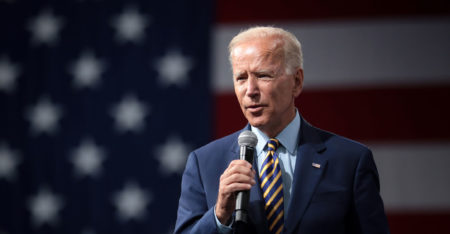
The 2012 US presidential election campaign broke many records: the most money ever raised (and spent), the most ads ever flighted, the most words ever written. And, in the back offices of the Obama campaign, chief technology officer (CTO) Harper Reed and his team were busy making it the most technologically advanced campaign in history.
Reed was in South Africa last week to speak at The Digital Edge, a technology conference. His topic, “How Blending Technology and Marketing won the US Presidency”, has netted him speaking engagements around the world. I sat down with him to find out more about his part in President Barack Obama’s victory.
Before the campaign, Reed was CTO for Threadless, the t-shirt-printing Internet start-up credited by the Massachusetts Institute of Technology with “inventing crowdsourcing” (which amuses him).
He admits that Obama’s people approached him about working on the campaign but downplays the significance. “They weren’t, like, ‘We need the CTO of a t-shirt company!’ One thing just led to another.”
Reed has a charming nonchalance about him, an inoffensive self-confidence that comes so easily to many Americans. When asked how he recruited more than 100 of the top technical minds in the country to the campaign, he shrugs. “Convincing people to join the campaign, especially on technology, was pretty easy because we just said ‘Do you want to work for the president?’ and then they said ‘Yes’.”
But Obama wasn’t the only drawcard. Technologies such as smartphones and social media were still nascent in 2008. “In 2012, all of our parents were using that technology,” Reed says, and this “mass appeal” made the campaign a particularly thorny (and therefore appealing) technological challenge.
But Reed is adamant that technology alone did not win the election for Obama. “The president won because he was the best candidate.”
To Reed, technology is merely a “force multiplier” — a mechanism that could turn “60 hours of a volunteer’s time” into “80 hours of value to the campaign”.
Getting these force multipliers in place was a huge challenge, one that Reed describes as “the hardest job I have ever done”.
One of the most difficult aspects was the sheer size of the campaign. As someone used to working with a few dozen people in a start-up, Reed suddenly had to contend with an “enterprise” of thousands of staff and millions of volunteers.
But Reed and his team clearly succeeded. The technology platforms they built mobilised millions of people to vote and helped to raise hundreds of millions of dollars. “One app built by two guys raised $750-million — that’s a pretty good ROI [return on investment]”, he jokes.
Reed believes that the success of the campaign “would be a pretty good case study” for large brands venturing into the world of data and social media.
The stakes, though, were much higher than mere business. “I like to joke, especially when I’m in a foreign country, that we were trying to save the world.”
To Reed, the Republicans represent a force bent on reversing decades of progress on issues such as gender, sexual orientation and race.
For him, the president’s ability to appoint supreme court justices is particularly significant. “It will help dictate where politics in the US goes in the next 20 or 50 years. And when you think that’s what’s at stake, you realise you cannot fail.”
Asked what advice he would offer to our local political parties entering an election year, Reed is unambiguous: “Technology can’t actually help you if your candidate sucks.”
Given the right candidate, though, Reed believes our high mobile penetration rate lends itself to grassroots organising by cellphone.
Many of Reed’s interviewers focus on his unconventional appearance, a trope he clearly enjoys. He jokes that for the next campaign politicians may start hiring tech people based on looks and “end up with a whole lot of homeless people”.
Seeing his wild hair, piercings and tattoos, his Republican rivals may have underestimated him. They never will again. — (c) 2013 Mail & Guardian
- Alistair Fairweather is chief technology officer at the Mail & Guardian
- Visit the Mail & Guardian Online, the smart news source




